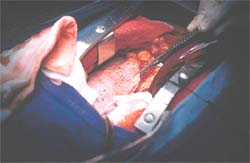The pollution story In Black And Pink
 India is facing a serious double burden of disease. Most of the old infectious diseases like malaria, filariasis and kala-azar have not yet disappeared; indeed they are bouncing back. At the same time, other chronic non-communicable diseases such as cancer, cardiovascular disease and respiratory disorders are becoming more dominant.
India is facing a serious double burden of disease. Most of the old infectious diseases like malaria, filariasis and kala-azar have not yet disappeared; indeed they are bouncing back. At the same time, other chronic non-communicable diseases such as cancer, cardiovascular disease and respiratory disorders are becoming more dominant.
It is becoming clear that the pattern of economic growth that we are adopting is becoming increasingly associated with environmental pollution. A study comparing the rates of economic growth and the rates of growth of vehicular pollution and industrial pollution shows that during 1975-995 the Indian economy grew by 2.5 times, but the industrial pollution load grew by 3.47 times and the vehicle pollution load by 7.5 times. Indeed, Indian cities are being exposed to high levels of air pollution and the people living in these cities are paying a price for the deterioration of the air quality. The World Bank has estimated that Indians are spending Rs 4,550 crores every year on treatment for the health problems caused by ambient air pollution.
Air quality in Delhi is deteriorating. Levels of primary pollutants-suspended particulate matter ( spm ), nitrogen oxide and sulphur dioxide-have gone up significantly in the last decade. The consistently high levels of total suspended particulate matter are worrying. Limited data available from the Central Pollution Control Board indicate that the levels of small particles less than 10 micron ( pm 10) are very high. This size of particulates is known to cause severe damage to the lungs. In fact, the World Health Organisation ( who ) has gone to the extent of saying that there is no safe level for particulate matter emissions. International studies have confirmed associations between elevated levels of particulate air pollution and declines in lung function or increases in respiratory symptoms such as cough, shortness of breath, wheezing and asthma attacks. Studies have also found associations between particulate air pollution and rates of hospitalisation, chronic obstructive pulmonary disease and restricted activity due to illness. A World Bank study on the health effects of air pollution in Delhi revealed that spm in Delhi alone led to premature death of 7491 in 1991-92. The study repeated for the year 1995 shows an increase to about 10,000 in just three years, which means a death rate of one person per hour due to air pollution.
It is not known on what scientific database such as epidemiological studies, morbidity and mortality patterns that air quality standards published for India are arrived at. Given the knowledge of the harmful effects of particulate pollution and the high concentration of particulate matter in Delhi's air, we need to generate regular information on the ambient concentration levels of small particulates of diameters less than 10 micron and/or 2.5 micron and take urgent steps to control emissions of these particles.
It is well known that the combustion of diesel generates small particulate matter, nitrogen oxides ( no x ), sulphur dioxide ( so 2 ) and polycyclic aromatic hydrocarbons ( pah ). Dieselisation of private vehicles is accelerating in Delhi. The relatively low prices of diesel are promoting its use further, which is a factor that encourages automobile manufacturers to introduce diesel versions of their vehicles. This development is bound to worsen the air quality of Delhi bringing in its wake a number of related health problems.
The new scientific information emerging from international studies indicates that the cancer causing potential of diesel exhaust is very high. The Scientific Review Panel of the California Air Resources Board points out, based on human epidemiological data, that a chronic exposure to 1
